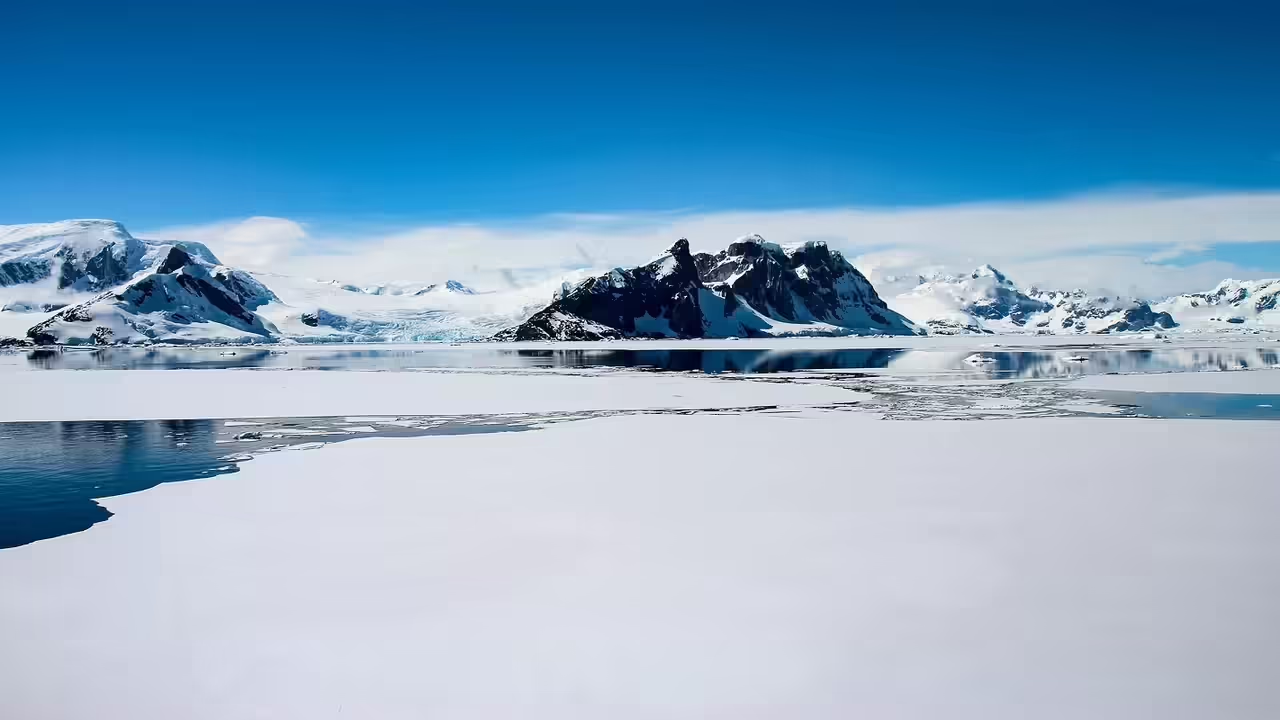
When we think of a desert, the image of a large and extensive sandy, dry and desolate territory usually comes to mind, where the heat is such that everything is blurred from the burning temperature and not a tree can be seen to rest on. under his shadow. But paradoxically, the largest desert on the planet is not loaded with sand, but with water.
On this occasion we present what is the true largest desert on Earth. Surely, the answer will surprise many:
It is about Antarctica. It may seem somewhat illogical, but it is what official science has deduced. One of the main characteristics of a desert is that there is almost no rain. And precisely, in Antarctica, not even 50 millimeters of annual rainfall is recorded per year. This data already makes it a desert and not just any, but the largest on the planetary globe, since it is a territory that has more than 14 million square km.
The Sahara desert covers an approximate of 9 million square kilometers. In the areas known as desert, the climates are extreme and almost no plant or animal can survive there, as in other geographical locations. In Antarctica, 99% of everything is frozen and although it is not unbearably hot, it is the opposite pole and few dare to go through these icy places.
Among the known reports, there were two explorers of French origin, who became aware of the existence of the Antarctic islands. They were: Bouvet and Kerguelen, in the year 1774. But in 1820, more land was discovered that did not appear on the official maps. On that occasion the expedition members were Edward Bransfield, Fabian Gottlieb von Bellingshausen and Nathaniel Palmer.
Antarctica is the largest desert in the world
Antarctic coastal regions are generally more exposed to cyclone storms. Rainfall in these areas is close to 250 millimeters per year. But in the central area of the continent, the rains are much scarcer and do not exceed 50 millimeters per year. Scientists consider that despite these factors, it is still a giant and arid territory.
The next largest desert in the world is not the Sahara, but the Arctic, which covers almost 14 million square kilometers and is located between the nations of Russia, Sweden, Norway, Finland, Greenland, Iceland, Alaska and Canada.
The scientific definition of “desert”
There is no precise meaning that fully describes this term, but there has always been a reference that a desert is that place where rainfall does not exceed 200 millimeters a year, but not only that, but the evaporation processes of the Soil water exceeds that of the rain itself, a fundamental reason why ideal environments cannot be developed for the majority of beings on the globe to inhabit. And in these polar regions, most precipitation occurs in the form of snow.
This enormous desert of Antarctica is a whole continent and among all, it is the southernmost on the planet. It is located in the southern hemisphere, almost as far as is estimated to be the Antarctic Circle, which consists of the Antarctic Ocean and the South Pole. It is listed as the fourth largest continent, after Asia, America and the African continent. If compared to Oceania, Antarctica doubles its territories.
Of all the continents, this is the windiest, driest and coldest. Although everything is covered in ice and snow, it is “the driest place in the world”. Experts say that it has the highest average altitude. This is the last region of Earth to be discovered by present-day humanity, but because it is an impressively hostile and difficult-to-reach place, it remained unexplored for virtually the entire 19th century.
Here, in the southernmost place on Earth, the nights do not end in winter and the days do not end in summer. This wonderful atmospheric condition was only discovered in 1911 by Roald Amundsen.
Despite being the largest desert on the planet, Antarctica is home to a wide variety of marine life. Despite the low temperatures and scarce sunlight, the water around Antarctica is rich in nutrients and is home to a wide variety of animals, including whales, penguins, seals, and algae. In addition, some extremophile unicellular organisms have been found in Antarctica living in waters close to underwater hydrothermal vents.
It is the place with the highest concentration of ice on the planet. Antarctic ice covers an area of approximately 14 million km², which represents 90% of the world’s ice. The ice in Antarctica is so thick that, in some areas, it reaches 4,776 meters deep.
Despite its cold climate, Antarctica is a place with a wide variety of seismic activity. Antarctica is home to several active volcanoes and is subject to earthquakes, some of which have been recorded at magnitudes greater than 6.0.
Thousands of mysteries are hidden in these icy Antarctic lands and the powers of the world know how to guard them with suspicion.







